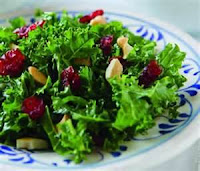Most people give little thought to how they use their feet. Yet, our feet influence our balance, joint alignment, and even core strength. As I watch my baby son wiggle his toes, arch and flex his feet, its unarguable that our feet were designed to be as expressive and mobile as our hands. Each foot has 26 bones, just one less that each hand. It also has 75,000 nerve endings connecting to other body parts. That's about 1,300 nerve endings per square inch. No wonder our feet are so ticklish. The feet influence the alignment of our ankles, knees, hips, and spine, and they are the direct gateway to the pelvic floor and abdominals.
When I first donned the Vibram Classic, I could wear them for about 2 hours a day before clinging to the stability of my old standbys. The first time I stepped outside the studio to grab a cup of tea next door, gravel stones, sidewalk cracks, and the dampness of the concrete were overwhelming. It was like being barefoot. A few weeks later I dashed out the door to pick up my son from school while still wearing the shoes. In a single moment, years of faulty foot mechanics jolted my body. As my feet hit the asphalt, I felt like I had jumped off the second story of the building and landed wrong. In that moment I realized that I had poor movement mechanics! My wooden clogs had allowed me to stomp my heels, thrust my legs, lock my knees, and jam my hips. No wonder my low back ached! Immediately I adjusted my gait. I walked softer and quieter. I carried myself with the stealthiness of a feline.
Pilates is a barefoot discipline. I am not sponsored by Vibram, and I do not sell their products. I am just a consumer who likes good shoes. Occasionally I work with someone who has so much foot pain that being barefoot is not an option. This is a person who doesn't walk barefoot even around their own home. Some of these people have benefited from wearing the Vibram shoes during class. I have other clients who suffer from foot neuropathy and cannot feel their feet. Lack of foot sensation affects their balance, and leads to foot dragging and tripping. The sticky rubber on the bottom of the Vibram shoes gives these clients confidence in their foot placement while doing exercises such as Footwork on the Reformer, and Standing Pumping on the Chair. The shoes also separate the toes, which helps to open the foot, thereby improving foot biomechanics. And since the shoes are completely bendable, clients learn to articulate their entire foot and move their toes, ultimately improving their flexibility and strength.
Almost a year later, I wear my Vibram Five Finger shoes on my favorite hikes, and enjoy the sensation of moss on granite rocks, pine needles, and even sand between my toes. Wearing the shoes has disciplined me to be mindful in my movements and strengthened my connectedness to the world around me. If you have experiences wearing these shoes, please share them so that others have the opportunity to learn more about improving their foot strength, flexibility, and biomechanics.
















